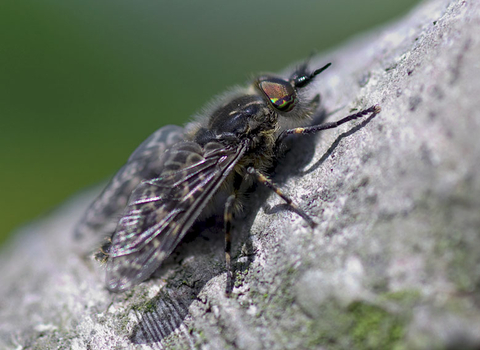
Notch-horned Cleg-fly ©northeastwildlife.co.uk
Notch-horned cleg-fly (horse fly)
The Notch-horned cleg-fly isa horse fly dark grey in colour, with grey-brown mottled wings and intricately striped, iridescent eyes. There are 30 species of horse-fly in the UK; this is one of the most frequently encountered species and also one of the smaller ones. Some of us have felt the painful bite of the Notch-horned cleg-fly (a 'horse-fly') while out walking in grasslands or woods, although it prefers to feed on the blood of cows and horses.
